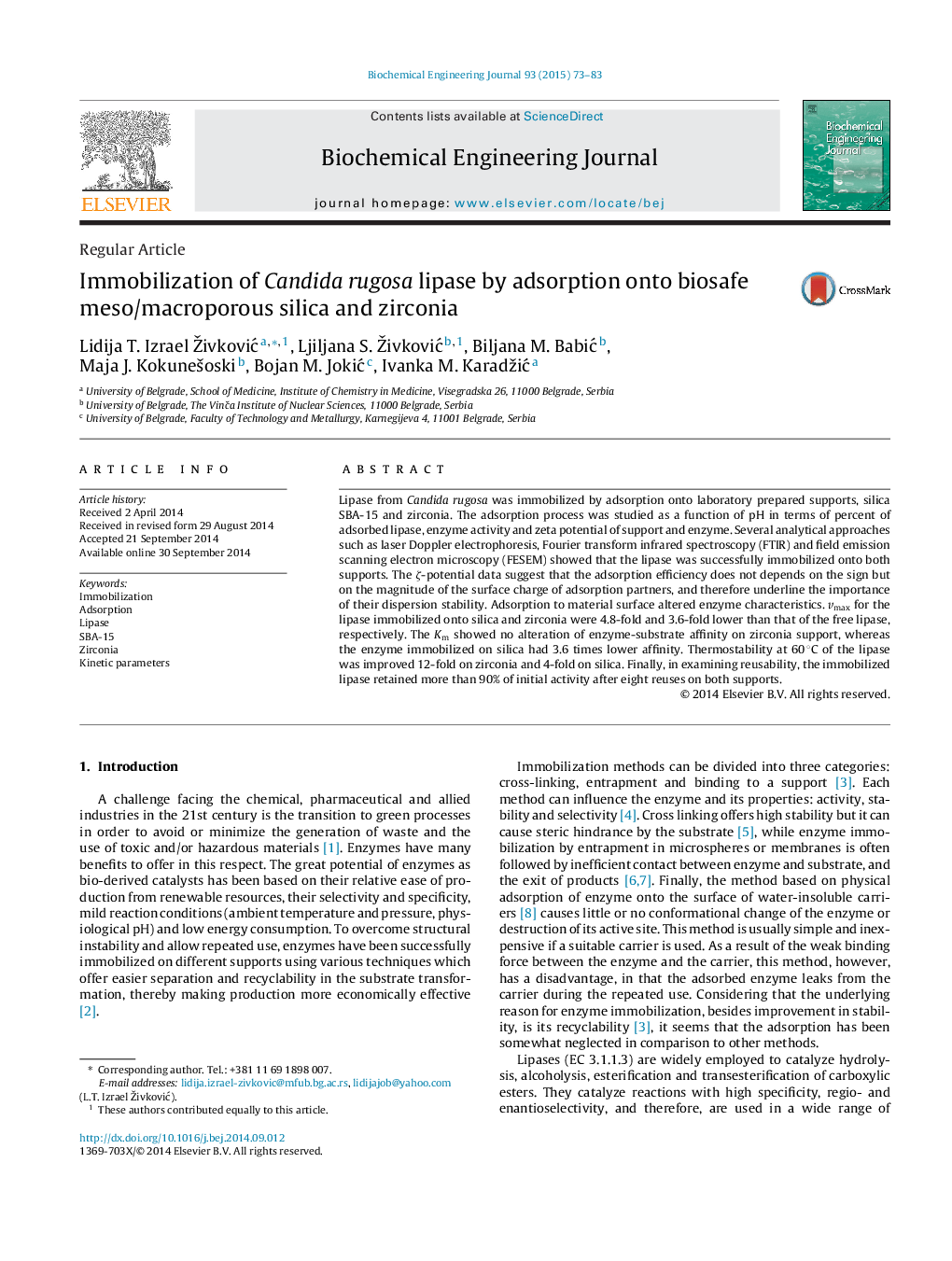| Article ID | Journal | Published Year | Pages | File Type |
|---|---|---|---|---|
| 3059 | Biochemical Engineering Journal | 2015 | 11 Pages |
•Simple and efficient method of enzyme immobilization by adsorption was developed.•Two inorganic biosafe non-modified supports: SBA-15 and zirconia were used.•Lipase activity was altered after adsorption to material surface.•Temperature stability of lipase was significantly improved after adsorption.•Significant potential for reuse of lipase on both supports was confirmed.
Lipase from Candida rugosa was immobilized by adsorption onto laboratory prepared supports, silica SBA-15 and zirconia. The adsorption process was studied as a function of pH in terms of percent of adsorbed lipase, enzyme activity and zeta potential of support and enzyme. Several analytical approaches such as laser Doppler electrophoresis, Fourier transform infrared spectroscopy (FTIR) and field emission scanning electron microscopy (FESEM) showed that the lipase was successfully immobilized onto both supports. The ζ-potential data suggest that the adsorption efficiency does not depends on the sign but on the magnitude of the surface charge of adsorption partners, and therefore underline the importance of their dispersion stability. Adsorption to material surface altered enzyme characteristics. vmax for the lipase immobilized onto silica and zirconia were 4.8-fold and 3.6-fold lower than that of the free lipase, respectively. The Km showed no alteration of enzyme-substrate affinity on zirconia support, whereas the enzyme immobilized on silica had 3.6 times lower affinity. Thermostability at 60 °C of the lipase was improved 12-fold on zirconia and 4-fold on silica. Finally, in examining reusability, the immobilized lipase retained more than 90% of initial activity after eight reuses on both supports.
